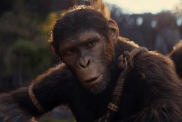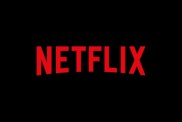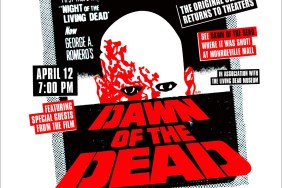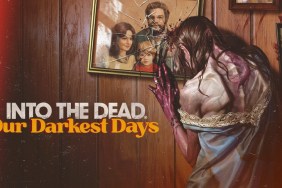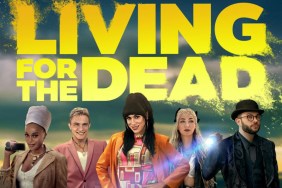A look back at Romero’s darkest day

No one trick or treats on the last day of school, no one carves jack o’ lanterns on July 4th, or goes on haunted hayrides in August.
When it comes to beloved macabre traditions, the fall is the season that gets all the attention. Thanks to the celebration of Halloween, the autumn months have always been indelibly associated with all things frightful. Summer, on the other hand, is ostensibly all that horror isn’t about â a golden time of warm weather, trips to the beach, fireworks, road trips and family picnics.
For those movie buffs that prefer the inside of their neighborhood cinemas (or, for some, the nighttime chill of drive-in theaters) to the blistering heat, however, the summer is the real witching season. Some believe that horror vacations in summer, waiting for fall to arrive, but box office history tells a different story.
Starting in 1975 when Jaws invented the modern blockbuster by teaching a generation to be afraid of the ocean, summer has been the best time of year to be scared. The fall can keep Halloween. It can keep the costumes, the candy, the Great Pumpkin, all of it â because summer has always had the better movies.

As a debut film, there have been few tougher acts to follow than the cinematic thunderclap of Night of the Living Dead (1968) but I think the real impossible act for writer/director George Romero to follow has been Dawn of the Dead (1978), Night‘s gaudy Technicolor sequel; the movie that ushered in the splatter age. As much as Romero is still revered as the godfather of the modern zombie movie, it’s a common lament that he’s been responsible for a lot of dead weight since Dawn. Whether that’s a fair or accurate view is debatable (personally I thought Survival of the Dead was a feisty, funny blast that showed Romero being more true to form than he’s been for ages) but certainly the first time Romero began to divide his devotees was with the much-anticipated Day of the Dead. In the summer of 1985, it wasn’t even a case of Day dividing fans so much as flat-out disappointing them. As a follow-up to the grainy, claustrophobic, monochromatic Night, it might’ve been more immediately accepted â maybe even hailed. But as a follow-up to Dawn‘s bracing humor, warm humanity and audacious imagination, forget it.
The widely known fact (in horror circles, at least) that, for business and financial reasons, Romero had been forced to scale down his original Day script into a much leaner story than the grand finale to the Dead trilogy that he had intended Day to be (Tom Savini described this early script as “Raiders of the Lost Ark with zombies”) made it difficult for fans not to feel disappointed from the start, regarding Day as merely a placeholder for a splashier splatter epic to come. Maybe it was the gradual realization, after a few years had passed with no news of a fourth Dead movie, that Day of the Dead was really going to be it for Romero and zombies for a long time â maybe forever! â that led fans to give it a more forgiving second look on video. Or maybe it’s just that a zombie classic couldn’t go unloved by horror buffs forever. Romero has affectionately referred to Day‘s followers as “trolls” and that’s a fitting epithet. There’s something unmistakably subterranean about Day, and it’s not just because of the caverns that its characters are holed up in.

A month after Day‘s release, in August of ’85, the zombie genre was turned on its cadaverous head with director Dan O’Bannon’s anarchic, punk rock-fueled zombie jamboree Return of the Living Dead. The crowd that I saw Return of the Living Dead with was with it all the way â the young attitude, the fashions (“So you think this is a f**king costume? This is a way of life!”), the music, the comic book vibe (when the Tarman Zombie came on, it looked like animation â not like someone in a costume), the irreverent humor (it’s hard to believe there was a time before “Braaaains!” and “Send more cops” wasn’t a part of every horror fan’s vocabulary), Linnea Quigley’s instantly iconic performance as Trash, and zombies that didn’t stagger but instead ran at full-throttle â all of it got a riotous response. Day of the Dead, not so much. The audience I saw that with the month before was not jumping out of their seats, laughing, clapping, and screaming. It was a pretty somber affair, like they were just taking it all in. In Day of the Dead, the dead were back from the grave but they weren’t ready to party and once O’Bannon’s film came out, it made Romero’s capper to his Dead trilogy look even more like a letdown.
Like the rest of the dazed audience I saw it with, I honestly didn’t know what to make of Day of the Dead at first. I was pretty thrown by it. I saw it in the theaters with a friend, before either of us were old enough to do so thanks to lenient theater personnel and the insistence on the part of our mothers that it absolutely was ok for us to watch this unrated gore fest. Being that when a film was unrated it meant that underage viewers weren’t allowed to watch the movie even with an adult guardian in attendance it was a real coup that the two of us got into Day without any chaperon. I don’t believe either one of our moms really thought it was ok for us to watch the movie but as we hadn’t shut up about seeing it for weeks, this was one of those times where persistence paid off.
From the start of the film, it was clear that Day was not going to be the rollicking good time that Dawn had been. Life for the characters in Day was not the bonding experience it had been for Dawn‘s quartet of heroes. There were no shopping sprees, no life of leisure, no romantic dinners. In fact, the relationships between the characters in Day and the grim situation they were coping with made the siege of the farmhouse in Night of the Living Dead seem like the makings of an airy romantic comedy.
As Day unfolded, I found there was never a truly easy moment to be had. It was the most emotionally abrasive movie I’d ever seen. Even the brief respite from the tension midway through the movie as Sarah visits the tropically decorated trailer of John (Terry Alexander) and Bill (Jarlath Conroy) wasn’t cause to relax. The situation was just too dire. Day wasn’t fun like Dawn had been and it wasn’t the kind of edge-of-your-seat horror film that Night was. Instead, Day was just disturbing and dispiriting throughout. The splatter, now that wasn’t so hard to handle. Shit, that was what we came for! The phenomenal gore gags that Savini and his crew came up with for Day (never bettered by anyone since) had my jaw dropping into my popcorn as often as zombie entrails hitting the floor of Dr. Logan’s lab. Every time Savini’s work was on the screen, I was disgusted, flabbergasted, elated. What made Day difficult to digest were the nuclear levels of vitriol between the characters and the grating performances of some the cast.

At first it was hard for me to decide whether Romero’s decision to go so broad with the material and to give his actors license to cut loose was an artistic misjudgment on his part but in hindsight, that’s what makes Day the movie that it is. Joe Pilato’s turn as the crazed Captain Rhodes makes Jack Nicholson at his most axe-happy in The Shining (1980) look as milquetoast as Stephen Lack in Scanners (1981). Richard Liberty as the loony Dr. Logan (aka “Frankenstein”), dressed in a perpetually blood-smeared lab coat, is every bit Pilato’s batshit equal. Howard Sherman as Bub, the first personable zombie in the Romero canon, on the other hand is downright Karloffian, imbuing Bub with layers of subtly portrayed pathos. The rest of Day‘s cast acquits themselves well, especially Lori Cardille as Sarah, who deserves credit as one of the strongest horror heroines of the ’80s, but performance-wise, it’s Pilato, Liberty and Sherman who do the most to make this an unforgettable Day.
Some say that Romero stacked the deck too much in this film, making its military characters cartoonishly belligerent, and that Day marked the tipping point where Romero started turning into a didactic filmmaker, preaching a message ahead of telling a strong story with engaging characters. I see where the criticism comes from but I think the arch quality of the characters in Day works. If anything, the bitter, wrathful exchanges seen in Day seem barely a step away from where political discourse has gone in the US in recent times so how grotesquely exaggerated Romero’s characters really are is up for debate.
Day is often regarded as a one-sided movie populated with characters that are really caricatures but on closer inspection, it’s trickier than that. Rhodes may be dictatorial and homicidal, but it’s seldom observed that he actually has good reason to be! Logan and the other scientists really are fucking with his men. He may be Bub’s bud but what Logan is doing ranks as evil and Sarah and the other scientists are enabling it. Rhodes is right that he and his men should stop facilitating the scientific team â their research is a waste of time and effort and in the meantime, his men are being used either as lab specimens or zombie chow! If any other movie character uncovered the kind of ghoulish operation that Logan was secretly running and put a lethal end to it, they’d be seen as the hero.

Rhodes also has the right idea about how to deal with Sarah’s boyfriend, Miguel (Anthony Dileo Jr.). Sarah enables Miguel to bring everything to an end by insisting that his life be spared. Had she not intervened and had Miguel been shot in the head as soon as he was bit, the base would never have been overrun. But that’s what I came to like about Day of the Dead â it’s more complicated than it appears. The sympathetic good guys make catastrophic mistakes that cost the lives of others and the deeply unlikable villains are, in many ways, the victims. It’s a movie where what appears to be the right decisions can be wrong and visa versa. No wonder it wasn’t immediately embraced.
The box office failure of Day was taken as a rejection of hardcore horror as the genre took a turn towards lighter fare in the late â80s. Like Carpenter’s The Thing, audiences weren’t ready for it but while it initially came and went like a summer shower, eventually Romero’s film did have its day.
Lifeforce (June 21st)
Fright Night (August 2nd)
Return of the Living Dead (August 16th)
The Amityville Horror (Jeff Allard)
Phantasm (Ryan Turek)
SUMMER OF 1980:
Friday the 13th (Jeff Allard)
SUMMER OF 1981:
Deadly Blessing (Jeff Allard)
Wolfen (Ryan Turek)
SUMMER OF 1982:
Poltergeist (Jeff Allard)
Friday the 13th: Part 3 (Ryan Turek)
SUMMER OF 1983:
Psycho II (Jeff Allard)
SUMMER OF 1984:
Dreamscape (Jeff Allard)





Source: Jeff Allard

